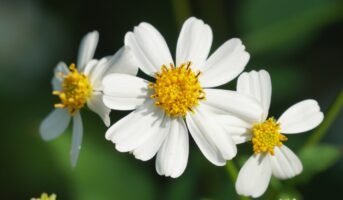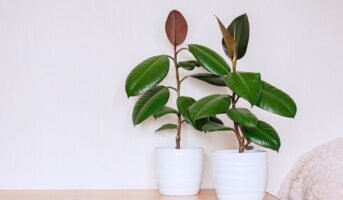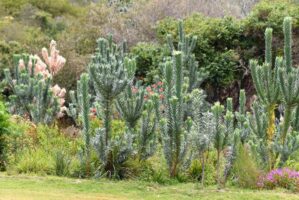Ficus Microcarpa is a common tree seen in parks and gardens. Usually grown for its ornamental value, it grows as high as 40 feet in height and forms a soothing shade canopy in summers. It’s also used as a screening plant or a hedge in gardens. Ficus Microcarpa is native to China through tropical Asia and the Caroline Islands to Australia. Now classified as Ficus Microcarpa, it was once classified as Ficus Nitida. Read on to learn more about this tree and the best way of caring for it.
see also about: benjamina ficus tree
What is Ficus Microcarpa?
Ficus Microcarpa (or Macrocarpa) is commonly known as Indian Laurel, Curtain Fig, Chinese Banyan, or Ficus Ginseng Tree. It is a tropical tree with smooth light grey bark and oblanceolate leaves. This latex-containing, evergreen tree with a rounded, or flattened crown shape has slender aerial roots hanging down from branches, and twigs. Its roots eventually develop into stout, and pillar roots. Figs usually grow as epiphytes on other plants, sending down aerial roots that extend to the ground and nourish the plant. These roots enclose the trunk of the parent tree, killing it while the curtain fig grows and flourishes. Avoid planting Ficus Microcarpa close to water lines or a septic system. The invasive roots can create potentially expensive damage to the area. Its fruits are initially green, then turn yellow to red and purple when they develop. They contain numerous small seeds like figs. These fruits are eaten by birds, who help in seed dispersal.

Ficus Microcarpa: Key facts
| Common name | Chinese Banyan, Ficus Compacta, Malayan Banyan, Indian Laurel, Curtain Fig, etc. |
| Native region | India, China, Malaysia |
| Botanical name | Ficus Microcarpa |
| Family | Moraceae |
| Foliage | Evergreen |
| Height | Indoor: 1.5 metre
Outdoor: Up to 40 feet |
| Sunlight | Ficus Microcarpa prefers almost six hours of sunlight. However, the hottest hours’ direct sunlight is not ideal. Indirect sunlight is the best option. |
| Soil | Well-drained fertile moist soil |
| Bloom | Like all Ficus trees, it forms syconia – small globular flowers of purple colour about 2 cm in size, which resemble berries.
|
| Uses | Used as a shade tree outside and is grown as a Bonsai tree indoors. This plant also has medicinal benefits and has been used in traditional medicines to treat flu, toothache, malaria, bronchitis, skin ailments, etc. |
The genus Ficus has about 900 species of trees, shrubs, and vines in the family Moraceae, many of which are commonly known as figs.
Ficus Microcarpa: Varieties
There are many varieties of Ficus Microcarpa and each variety has a different shape, and size. Its bark colour varies too.
- Ficus Microcarpa ‘Moclame’ have leaves shaped like figs and grow at close intervals. This is an ideal houseplant from 1 to 2 feet tall, with a tree-like stem and bushy leaf ball. Stems can be woven or braided easily.
- Ficus Microcarpa, Green Island Figs, is popular as a Bonsai plant. It has small round leaves and are used for low-growing border, formal hedge, or patio planter.
- Ficus Microcarpa, or ‘Green Emerald’ has oval rounded glossy leaves. It is well-suited for Bonsai transformation. It has aerial roots and exposed roots, which give the appearance of great age.
- Ficus Microcarpa, or ‘Tiger bark’ has stripes or spots patterns on bark and roots that are exposed to air. It is also well-suited for Bonsai, though the nice bark patterns fade away with age.

What is Ficus Moclame?
Ficus Moclame is one of the most popular varieties of Ficus Microcarpa. This beautiful evergreen houseplant flaunts glossy oval leaves and is renowned for its ornamental value. One of the main reasons for its popularity as a houseplant is that it is very helpful in filtering airborne toxins from the surrounding environment.

Ficus Microcarpa: Care tips
Ficus Microcarpa: Sunlight requirement
Ficus Microcarpa is a warm-weather-loving plant that can thrive well under the right conditions. Most Ficus Microcarpa bloom in full sunlight to partial shade. If you are growing a Ficus Microcarpa tree indoors, place it near a window with maximum sun exposure.
Ficus Microcarpa: Soil requirement
Ficus Microcarpa needs well-drained, and fertile soil. Soil-based potting mixtures work well for this plant and provide all nutrients it needs. If it is growing in a pot, loosen the topsoil regularly without disturbing its roots, so that it can absorb nutrients and water.
Ficus Microcarpa: Water requirement
Ficus Microcarpa prefers moisture at roots. So, maintain a balanced moisture regime at its roots. Allow the soil surface to dry slightly before watering it again, but never let the soil dry out completely. If its roots are kept wet continuously, it will rot. For potted trees, check the soil with your fingers, and if the top inch is dry, water it until it runs out from the bottom. Make sure the pot has drain holes. The roots do not like to remain wet. It should be moist, so ensure proper drainage.
Also read about these gardening ideas and tips for beginners
Ficus Microcarpa: Fertiliser requirement
When planted indoors, Ficus Microcarpa requires a mild liquid fertiliser, or slow-release pellets every month during summers and growing seasons. If you can’t find fertiliser pellets, opt for used coffee grounds to provide nutrients like nitrogen.
If grown outside, Ficus Microcarpa trees need an appropriate liquid fertiliser, or organic fertiliser, once in every two weeks during the growing season.
Ficus Microcarpa: Pruning requirement
Ficus Microcarpa is a fast-growing tree that requires medium pruning as part of regular maintenance. It grows like an epiphyte on other trees.
Ficus Microcarpa: Pests and diseases
Monitor Ficus Microcarpa for pests such as thrips and aphids. Spray neem, or eucalyptus oil for any insect/pest attack, as a primary treatment. Thrips can cause curled leaves. Along with neem oil, use insecticides to control thrips. Pruning thrip-infested branches are effective, if only a small portion of the tree is infected. Aphids can be easily knocked out from leaves and branches with a strong stream of water. If your Ficus Microcarpa starts looking sick, or its leaves turn yellow, it may be due to overwatering. Spray some mixture of soap and water twice a day, for two weeks, when you notice bugs.
Ficus Microcarpa: Bonsai
Ficus Microcarpa is one of the most popular trees for indoor Bonsai. They can tolerate low light and humidity from air-conditioned rooms. Its leaves become dense, giving you a thick canopy. The ‘Banyan’ style roots are commonly trained in a root-over-rock style. Ficus Microcarpa grows faster, for example, if you cut it leaves to 2-4, they will grow to 6-10 leaves quickly. Keep trimming it during the growing season.
Regular misting or setting the Ficus tree on a pebble tray filled with water is a good way to increase its humidity. Note, they like high humidity, but they do not like over wet roots. The plant’s root system enables Ficus Microcarpa to survive in harsh settings for long by swelling and storing nutrients and water. The older the plant gets, the more it swells. Therefore, you can transform the Ficus Microcarpa plant into a lovely Bonsai with some training. Repot the plant in one or two years, along with defoliating, pruning foliage and roots to gradually create a Bonsai.


Ficus Microcarpa: Propagation
Ficus Microcarpa can easily be propagated by cutting its stems. Propagating the plant is simple. Take the cuttings and place them into water or sterile soil, so that roots can come out. The best way is to take a cutting from a larger branch or from a naturally occurring offshoot. Keep the cutting in normal water and place it near the warm part of the house, out of direct sunlight and keep the soil moist. Once cuttings start growing and developed strong roots, they can be planted out, or in a big pot.
Ficus Microcarpa: Uses
Ficus Microcarpa provides shade in summers. It is one of the most popular street trees in temperate cities across the world. The root, bark, and leaf latex are used to treat wounds, headaches, liver diseases, toothache, and ulcers. Aerial roots are useful in treating skin diseases.
Ficus Microcarpa: Toxicity
Though, a popular houseplant Ficus Microcarpa can be toxic to dogs and cats. The sap on leaves can be irritating to dogs when ingested or applied on skin. So, it’s advisable to keep this plant out of reach of your pets.
FAQs
Is Ficus Microcarpa an indoor plant?
Ficus Microcarpa is a tropical tree, cultivated as an ornamental tree in streets and gardens. It can be cultivated indoors, as well as outdoors. Ficus Microcarpa is one of the most common plants to make Bonsai as its branches are easy to bend and can be given a new shape.
How tall can a Ficus Microcarpa grow?
Ficus Microcarpa is a tropical tree with smooth light grey bark and entire oblanceolate leaves are about 2-2.5 inch in width. In Mediterranean conditions, it can grow up to 40 feet in length and with an equal spread of the crown.
Are the fruits of Ficus Microcarpa edible?
Ficus Microcarpa fruits are green before they mature and turn red and black later. They are not palatable for human beings, but birds eat them. The fruits are only fertile if visited by a specific ‘fig wasp’ insect.
Purnima Goswami Sharma is a freelance writer based in Mumbai, who has been contributing to various newspapers, magazines and portals for the last two decades. Besides being a research writer for various TV shows, she has been a visiting faculty at SNDT for Communication Skills. She hold a master’s degree in English Literature from Mumbai University and a diploma in Communications and Journalism. She writes on diverse subjects like real estate, interiors, education, lifestyle, health, entertainment and environment.
Email: [email protected]












